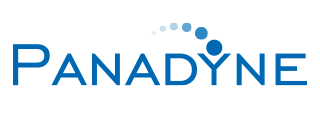The world has never been more connected than it is today. Wireless telecommunications enable us to reach almost anyone on earth instantaneously, using handheld mobile devices transmitting electromagnetic signals across a frequency band of around 2-8 Gigahertz (GHz). This is the main range of the fourth generation of wireless devices, also known as 4G. But current wireless infrastructures are struggling to meet growing demand for low latency communications at higher data rates than ever before. Consequently, we are now moving into the fifth generation of wireless: 5G.
Understanding 5G & the Need for Dielectric Filler Powders
The 5G era will be characterised by rapid high frequency circuits covering the cellular spectrum of all prior communications, plus higher frequencies that are several orders of magnitude greater than any currently used. It will also mean a greater number of wireless access points distributed closer to one another rather than widely dispersed, large cell towers. This comes down to high-band signal loss.
Millimetre waves of 10GHz and more are susceptible to attenuation. This means that high-band signals quickly decay, yielding a shorter range. Hence the need for a different sort of infrastructure. Currently, the onus is on manufacturers to optimise telecom arrays with ultra-low dielectric loss materials. This will maximise signal amplitude over greater distances and subsequently improve the performance of entire 5G networks.
Dielectric Filler Powders for Next-Gen Circuits
Low loss filler powders are the main avenue taken by manufacturers of copper clad plates (CCPs) and copper clad laminates (CCLs) for high-speed circuitry. There are numerous benefits to leveraging dielectric fillers in next-generation circuits. First, there is a volumetric effect which means they supplement copper or resin volume and reduce manufacturing costs. Secondly, a high-performance filler powder can improve both the thermal and electronic properties of the part. More heat can be distributed per unit of surface area while the part is also less prone to attenuating electromagnetic signals.
Each of these properties contributes to easier fabrication of higher-power, greater efficiency CCLs and printed circuit boards (PCBs) for novel antenna architectures. Low-loss filler powders may prove ideal for next-generation flexible CCLs and PCBs – provided the market gradually moves in that direction.
Which Materials are Suitable for 5G Dielectrics?
Technical ceramics are earmarked as critical for 5G systems in both the millimetre and sub-6GHz frequency bands, owing to their inherently low dielectric constants and increasingly simple conformability. This means they can be easily integrated into antennas, filters, and resonators with dramatic improvements to both dielectric and thermal performance. Common ceramic filler powders used in CCPs and CCLs include:
- Silicon dioxide (SiO2)
- Aluminium oxide, or alumina (Al2O3)
- Aluminium nitride (AlN)
- Titanium dioxide (TiO2)
Boron Nitride Filler Powders
Although the above fillers perform admirably, few can match the unique characteristics of hexagonal boron nitride (HBN) when it comes to improving the dielectric and thermal properties of high-frequency circuits.
In high power applications where signal integrity is key, hBN brings unique value. Compared to silica, hBN shines as a much more thermally conductive option that maintains dielectric performance across a range of temperatures and frequencies. Coupled with its intrinsic lubricity and low hardness, hBN is also much less abrasive than hard-wearing ceramics like alumina. This allows for easier final processing of PCBs, such as drilling of through-holes, that is gentle on equipment.
If you would like any more information about the Low Loss Filler Powders available from Saint-Gobain, please do not hesitate to contact us.
